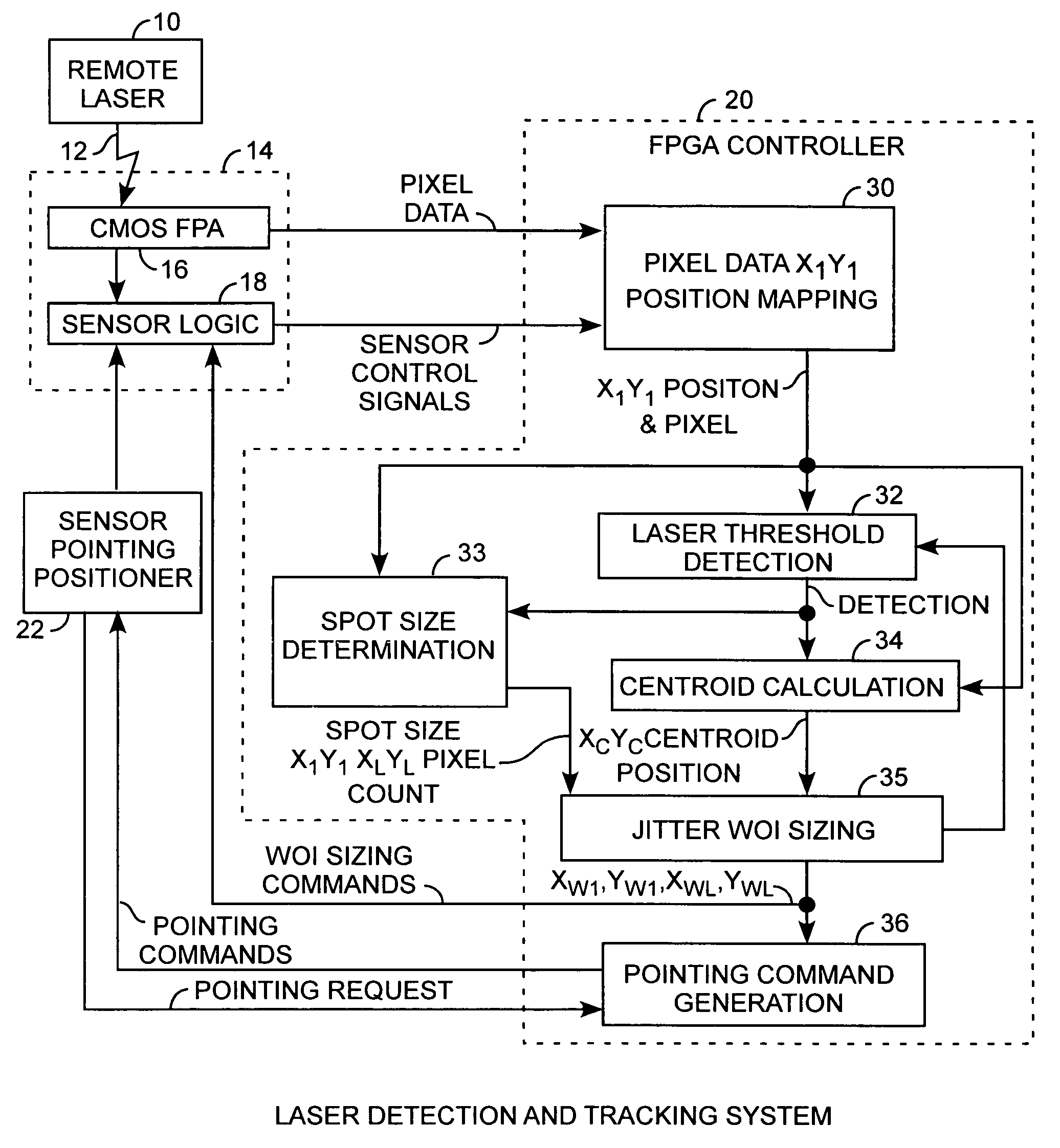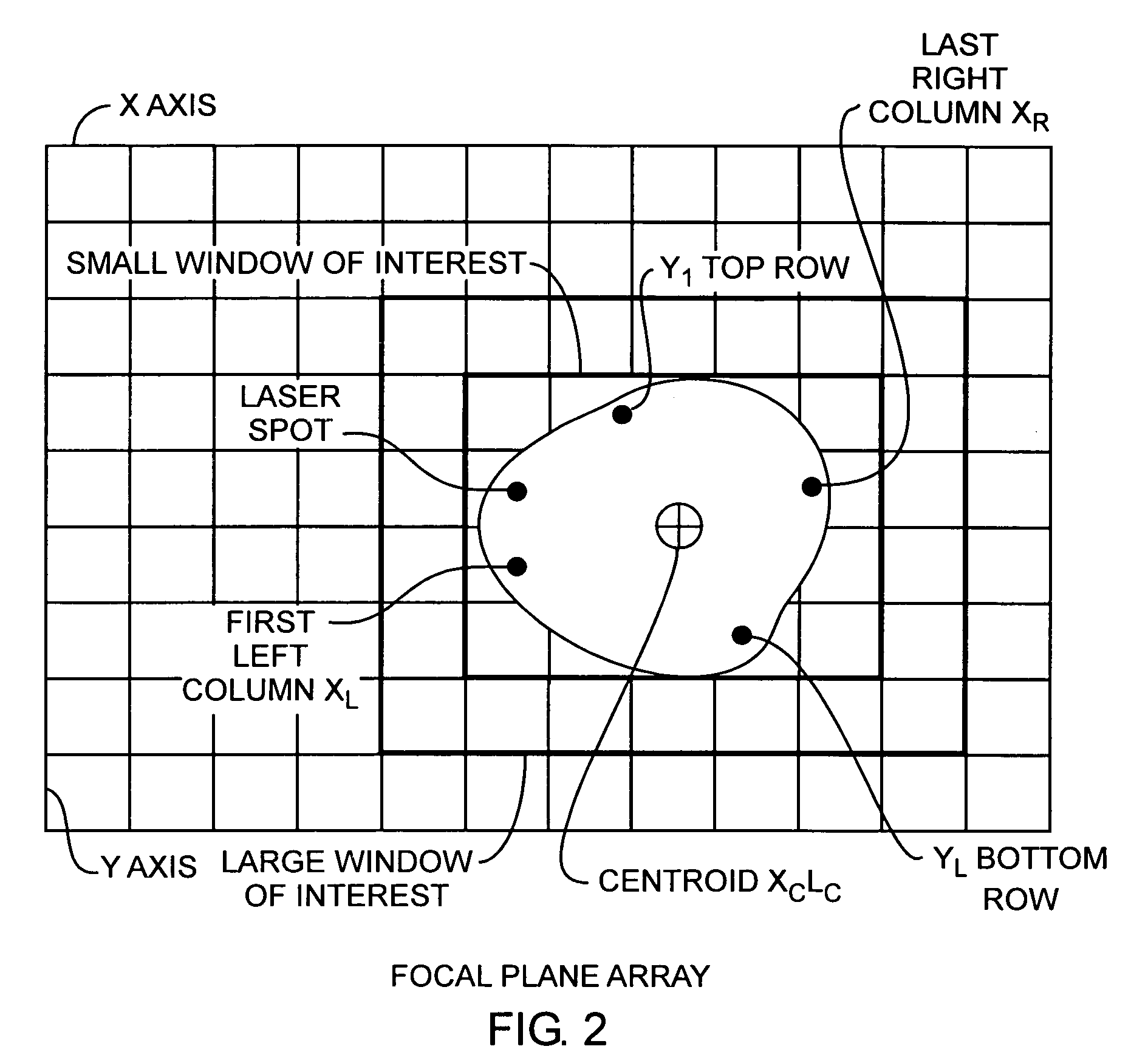Electro-optical focal plane array digital sensor system
a digital sensor and optical focal plane technology, applied in the field of laser beam detection and tracking, can solve the problems of affecting the smoothness of the tracking system, increasing the size, weight, power, thermal control, complexity, etc., and achieve the effect of increasing the frame rate pixel data
- Summary
- Abstract
- Description
- Claims
- Application Information
AI Technical Summary
Benefits of technology
Problems solved by technology
Method used
Image
Examples
Embodiment Construction
[0022]An embodiment of the invention is described with reference to the figures using reference designations as shown in the figures. Referring to the Figures, a laser detection and tracking system is used to track a remote laser 10 as a source of a laser beam 12. The laser 10 may be disposed on an orbiting satellite and the laser detection and tracking system may reside in a ground tracking station or a second satellite. The laser beam 12 impinges upon a focal plane array (FPA) sensor 14 including a CMOS focal plane array 16 and sensor logic 18 for respectively communicating pixel data and control signals to a controller 20 that is preferably a field programmable gate array (FPGA). The controller 20 functions as a window controller for the sensor 14. The sensor 14 may be a satellite or ground station electro-optical sensor used to detect and continuously track the laser beam 12. The gate array controller 20 can be configured using VHSIC hardware description languages for embedded p...
PUM
 Login to View More
Login to View More Abstract
Description
Claims
Application Information
 Login to View More
Login to View More - R&D
- Intellectual Property
- Life Sciences
- Materials
- Tech Scout
- Unparalleled Data Quality
- Higher Quality Content
- 60% Fewer Hallucinations
Browse by: Latest US Patents, China's latest patents, Technical Efficacy Thesaurus, Application Domain, Technology Topic, Popular Technical Reports.
© 2025 PatSnap. All rights reserved.Legal|Privacy policy|Modern Slavery Act Transparency Statement|Sitemap|About US| Contact US: help@patsnap.com



